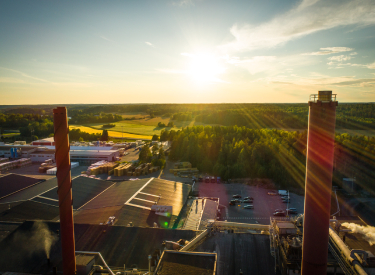The most important question: ‘How?’

Change is coming whether we want it or not, but we can choose how we approach it. Lindgren talked about decarbonizing our process and Owens Corning‘s goal to reduce CO2 emissions by 50% by 2030, compared to 2018 emission level. We could just throw money at the problem, or we could seize the opportunity to make our process simpler and better. To make a real change.
In the last couple of years, we have done just that.
In a nutshell, the effort can be summed up by the question ‘How?’ How do we change our process so that we achieve our goals and decarbonize our production? We started by going through all the areas in the production process and identifying the ones that generate the most emissions. In OC Paroc’s stone wool production, that area is cupola melting, where the stones are melted using coke as the energy source.
Two melting technologies are used in OC Paroc's factories: cupola melting and electric melting furnaces. Whereas cupola melting is powered by coke, electric melting furnaces are powered by electricity. OC Paroc currently has three electric melting furnaces: one in its Finnish factory and two in its Polish factory. Work is underway to establish our biggest production line in Sweden called Natura Line, which will utilize the low CO2 electric melting technology.
During 2020, we studied several melting technologies and compared their pros and cons, in addition to several renewable fuels that are available today or are up & coming. It became clear that electric melting was the most energy-efficient option: the production process using electric melting furnaces powered by renewable electricity creates 80% less CO2 emissions than a cupola furnace.
New innovations
Then the real work began. It has consisted of going through ideas, ways, and calculations to further develop and improve the electric melting process. This means thinking not only about money, but also about how to spend it to achieve the most efficient, smooth, and low-carbon outcome possible.
The work has been a huge learning experience, during which we have found numerous innovative solutions. And we are not only banking on converting the cupolas into electric furnaces: We are further exploring options to reduce CO2 emissions elsewhere in the process. The promising options will be trialled in the near future.
A huge step in Poland: renewable electricity

Ayush Mishra
Global Decarbonization Lead,
Green Vision 2030 Project Lead